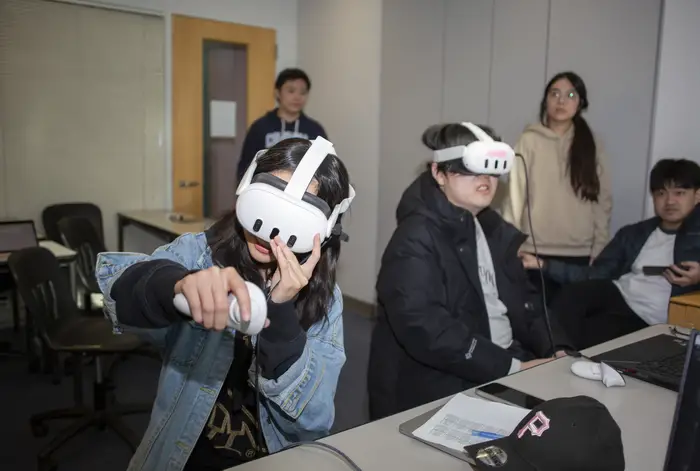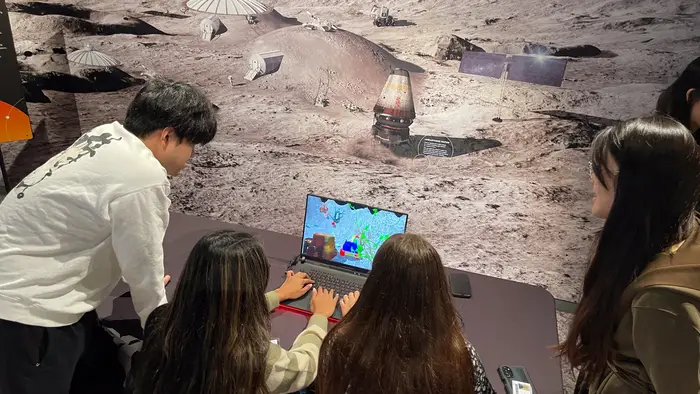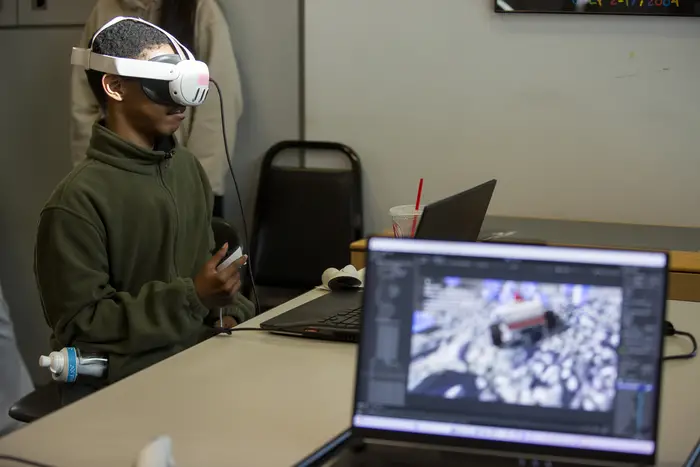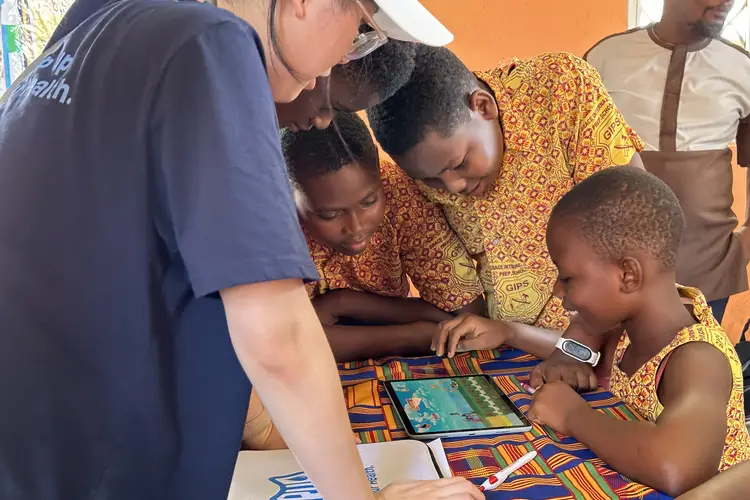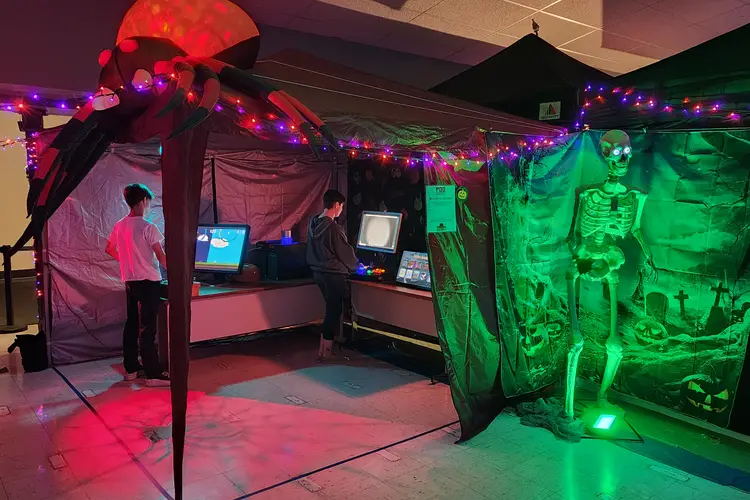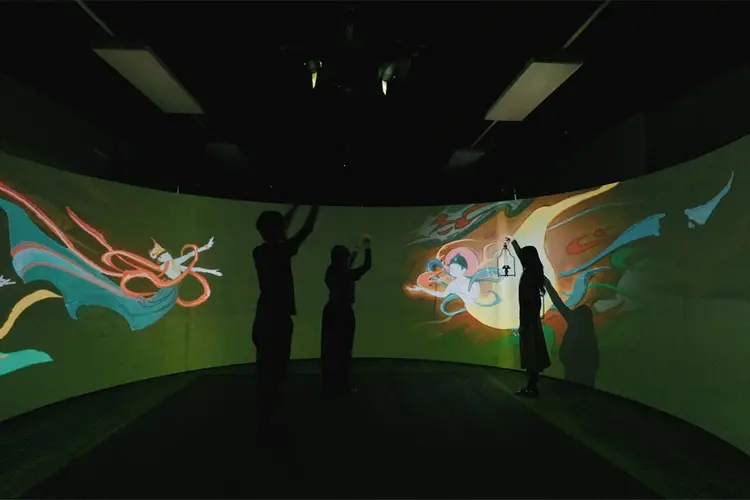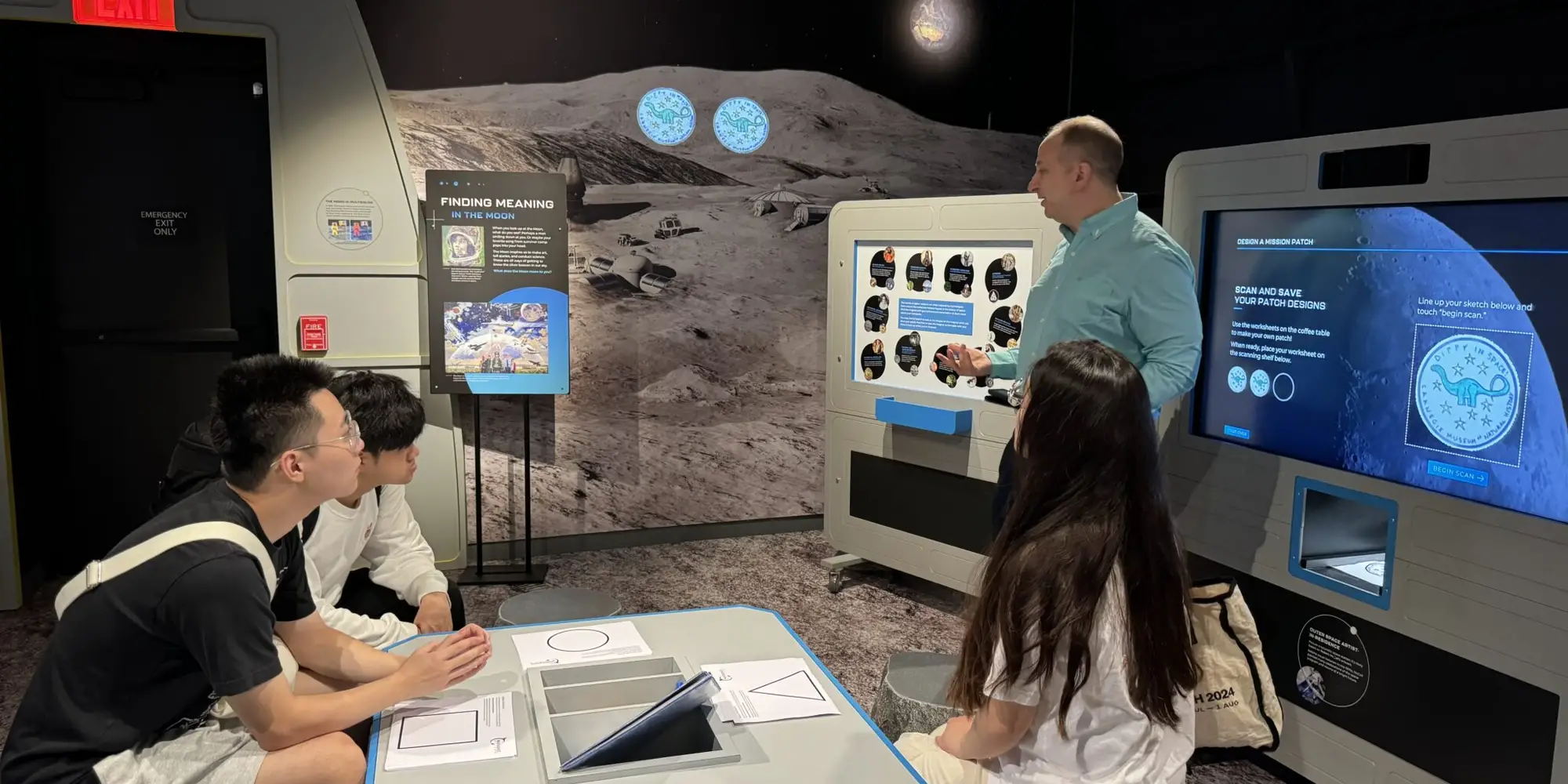
ETC Collaboration Fuels Future Careers in Space
Media Inquiries
Last fall, the team of Carnegie Mellon University’s Entertainment Technology Center(opens in new window) (ETC) graduate students behind MoonRover(opens in new window) — one of Fall 2024’s ETC projects — got big news during their final presentation.
Unexpectedly, that news came from someone in the audience: Moonshot Museum Executive Director Jimyse Brown(opens in new window). The museum had been the client on the project, tasking the MoonRover team with developing an immersive experience for them. And, as it turned out, the team’s work had already succeeded.
“I had the opportunity to present this (MoonRover project), along with some other accompanying VR experiences, to a foundation and it went so well that it got funded!” Brown said to the team. “This sizable donation, along with our grant from NASA, means that students in Western Pennsylvania, Eastern Ohio, Northern West Virginia will be able to have VR experiences — including this one — that will ignite their passion for space and educate them about our industry.”
It’s a success that’s been a long time coming, the result of both the ETC and the Moonshot Museum’s long-standing relationship and the project work they’ve done together.
Launching a partnership
The Moonshot Museum(opens in new window) was started with the goal of introducing students to space-related careers and developed in partnership with Pittsburgh-based space robotics company Astrobotic(opens in new window) — co-founded by CMU professor William “Red” Whittaker(opens in new window) and CMU mechanical engineering graduate John Thornton. The company still maintains a close relationship with CMU, which made the museum joining forces with the ETC obvious.
“The relationship between the ETC and the Moonshot Museum really dates back to the very inception of the museum itself,” said Moonshot Museum’s Manager of Learning and Programs Mike Hennessy. “We wanted to carve out a pathway for students emerging in the ‘edutainment’ field that would allow them to use Moonshot as an incubator for their ideas.”
The museum signed up for three projects with the ETC — the most recent being MoonRover. “The museum has been a really good partner,” said ETC Research Professor Scott Stevens(opens in new window), who advised all three projects alongside ETC special faculty member Shirley Saldamarco(opens in new window).
“A lot of our students come here really game-focused, just thinking about fun,” Stevens said. But then they start making something that’s also a learning experience — like what these teams have done with the Moonshot Museum — and they realize they find a lot of joy in seeing kids get excited about learning.”
Testing it out
In Spring 2023, the museum and the ETC began collaborating on a series of projects, with Moonlanders(opens in new window) being the first team to have them as a client. The museum asked them to come up with ideas for educational museum installations; over the semester, they narrowed thirty ideas to three prototypes.
“(Prototyping) is a great way to test the feasibility of a design and to spark new ideas,” said Moonlanders team member and 2023 ETC graduate Tsai-Yen Ko, who now works at RLMG — the same digital design studio that worked on the Moonshot Museum’s development.
“I’ve always been interested in location-based entertainment, and through (Moonlanders) I discovered that museums are another option besides theme parks and escape rooms. That’s one of the reasons why I applied for the job I have now,” Ko said. “Mainly I work on developing interactive software for exhibits, but prototyping is part of the job too!”
The Spring 2024 team, Moonsters(opens in new window), picked up where Moonlanders left off. This time, they designed an educational game based on NASA’s VIPER mission, which Astrobotic was part of. “It was about finding water ice on the moon, so the game taught students why that’s important,” Stevens said. Drawing from the previous prototypes, the team built one from scratch — handing it over to the museum for further development.
All systems go
The next semester, the museum tasked the MoonRover team with building on how the previous teams leveraged Astrobotic-built technology and rovers. “But this time, it was about putting students in the future,” Hennessy said.
“We started with one of the pitches the last project team did, but they chose to go in a more educational direction,” said second-year ETC student and MoonRover producer Nina Wang(opens in new window). “This time, (the museum) wanted it to be more about gamifying the material — to serve as a really fun, entertaining hook for the museum itself, one that would get kids excited to learn about the science behind it.”
They built a two-player VR game that simulates a lunar expedition — one player driving the rover while the other controls its arm. The twist is that it’s set in 2050, and players must work together to mine the moon’s surface and begin farming it.
Thinking about their game in the context of the future of space exploration presented a unique challenge. “The team had to be rooted in science but also incorporate elements of science fiction to engage students, because the museum didn’t want it to reflect only what’s possible now,” said Saldamarco. “They wanted to demonstrate what might be possible in the next 30 years.”
“We had to do a lot of research about current science while also thinking several steps down the line. What will the kids playing this game be doing when they grow up? What will be possible then?” said Wang.
They also had to think about the game’s design, consulting with ETC faculty like Distinguished Professor of the Practice Jesse Schell(opens in new window). “The project was ambitious in many ways, and I was glad to help the students focus on what was important — like avoiding motion sickness — so that they could deliver,” Schell said. “And I think they did a fantastic job balancing fun and education to make a memorable experience that works really well — especially for kids.”
And it was a success for the museum too. “I can’t say enough how hard the team worked,” said Hennessy. “The amount of creativity and work they put into it, their willingness to incorporate feedback, and the fact they made something museum-ready in a semester — it exceeded our expectations.”
Blast off!
In early 2024, the museum received an $800,000 grant from NASA(opens in new window) for their Cosmic Careers program — an initiative to introduce underserved students to careers in aerospace. But to achieve their plans for mobile outreach, on-site experiences, and virtual simulations, they needed additional funding. The MoonRover team’s work, when presented to a foundation by Dr. Brown, helped them secure it.
MoonRover’s VR experience is now a permanent offering at the Museum and part of this traveling program. “We have a dedicated van that’ll go to schools and be a mobile planetarium and a game lab. And what the team developed was just a perfect match,” Hennessy said.
“We’re all about the idea of finding your place in space. No matter what your career aspiration is, there’s a way you could line that up with the space industry,” Hennessy said. “Now, on any given day, students in West Virginia or Ohio could play this game. And then we can tell them that what they just played was made by students just a few years older than them — students in a world-class program that’s right here in Pittsburgh.”
Iris: A heartbeat in space
On Jan. 8th, 2024, the CMU Iris Rover, the first ever lunar rover built by university students, launched with a destination for the moon. The Iris Team, which is comprised of students from various programs at Carnegie Mellon, has been preparing for mission-critical scenarios for months. So when the team learned that the Iris Rover wouldn't be able to land on the lunar surface due to a malfunction with the lander, the team sprung into action to fulfill a new mission. Learn more
